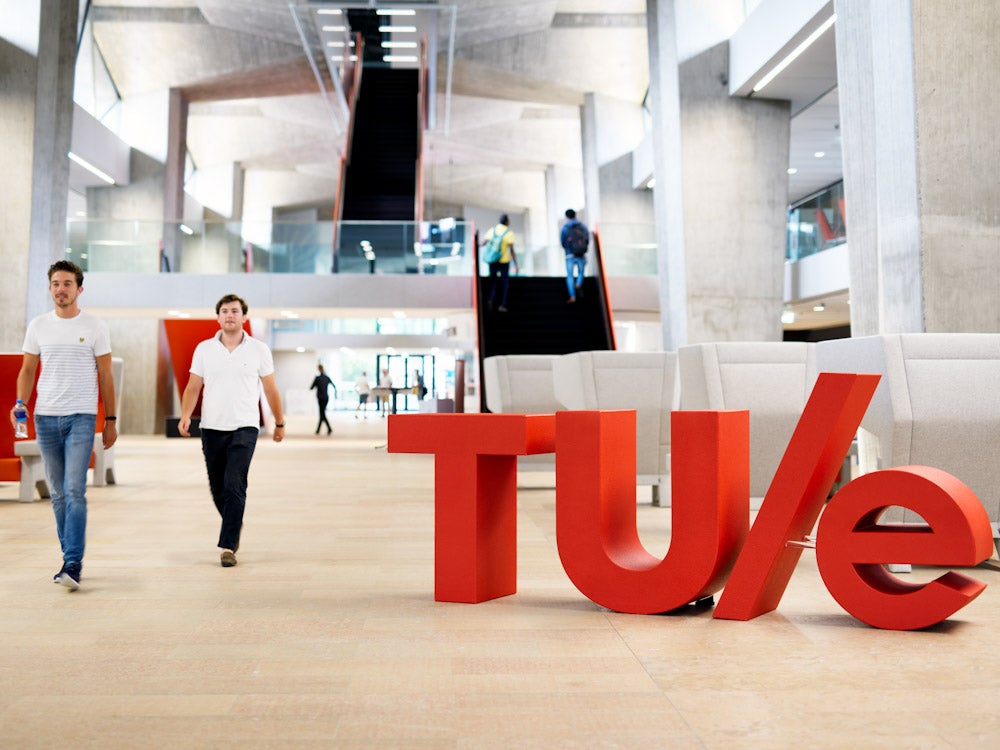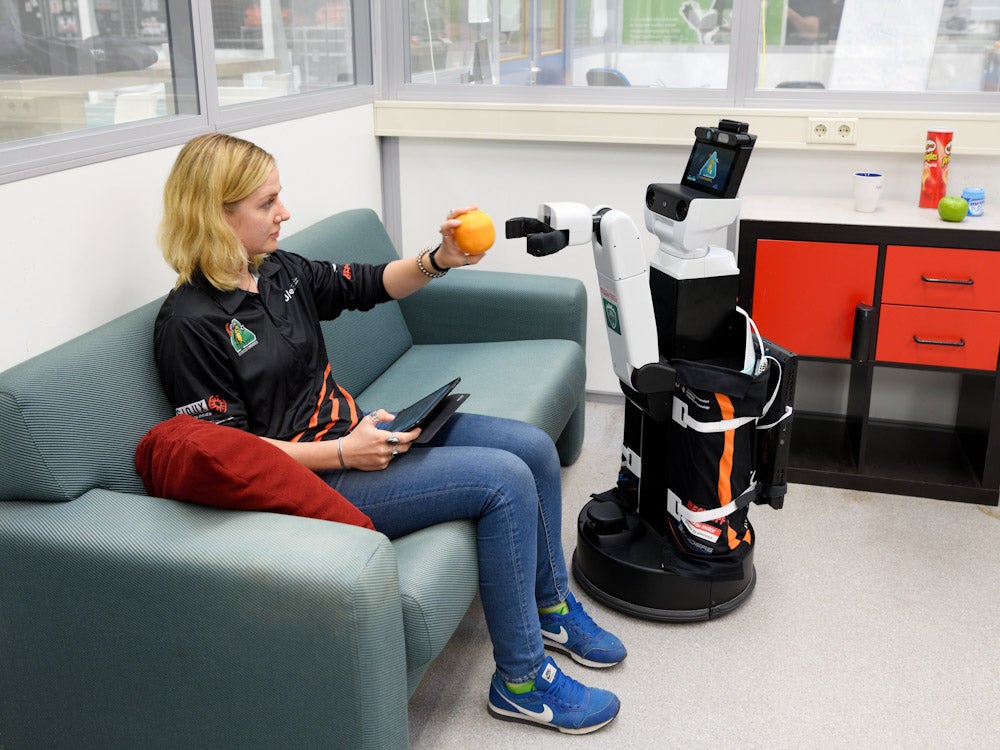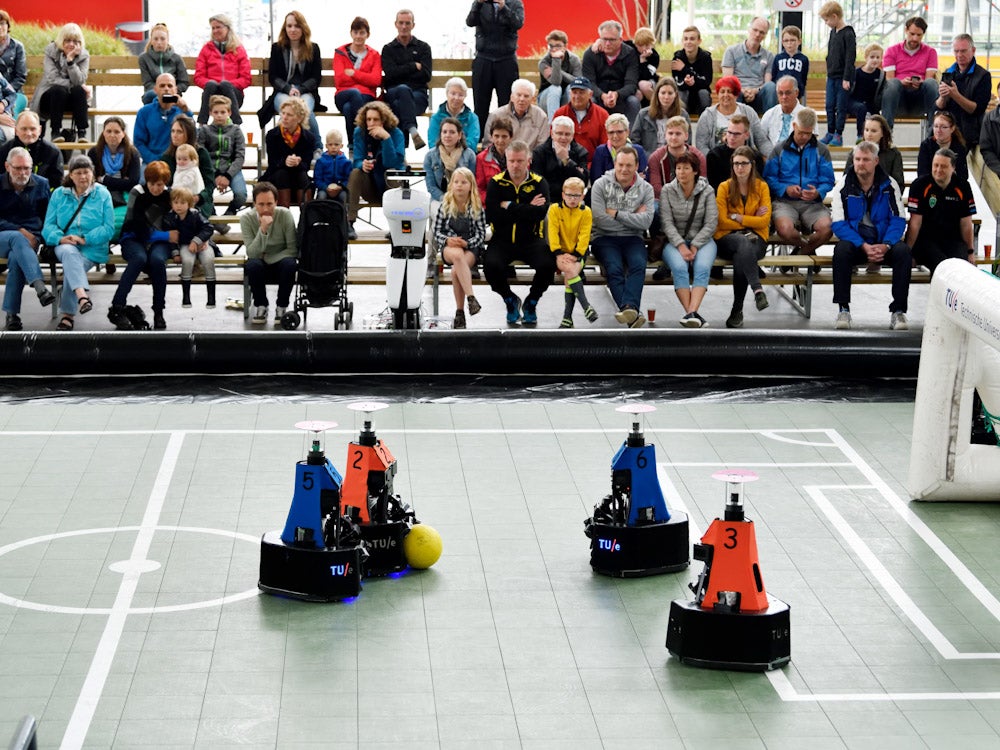
Robots and artificial intelligence (AI) will play an integral role in the future workforce, which is currently in development in the province of Brabant in the Netherlands. Many of these technologies could soon help to solve the global labour shortage.
Brabant is where tech start-ups can form, grow and flourish. The province’s robust tech ecosystem and open collaboration culture continue Brabant’s rich tradition of technological innovations.
In Brabant, and notably its Brainport region, the universities provide a particular advantage for experimenting in low-risk environments while developing advanced technologies through partnerships between businesses and academic institutions.
“The Brainport region is very innovative,” says Thijs Dorssers, manager of Holland Robotics, the association for robotics in the Netherlands. “There are many start-ups in buildings that are not so expensive to rent. There is a great knowledge of technology and a very strong network where people will work together.” The association aims to raise the profile of the robotics industry both nationally and internationally to attract more talent and funding to the region.
“There are different start-ups, born at the university and then grown,” adds Dorssers. “They can easily make the step to entrepreneurship, from student team to a start-up company.”

Talent is highly sought after – both in terms of the next generation in education and internationally – to ensure that the myriad technological opportunities are fulfilled.
“The potential of technology nowadays is not limited by the amount of money that we have available or budgets, nor by the technical potential, because that is huge,” says Carlo van de Weijer, general manager of the Eindhoven AI Systems Institute (EAISI) at Eindhoven University of Technology (TU/e). “It is just limited by the number of people we can find to harvest all these possibilities.”
To address this, there are a series of initiatives to attract talent to Brabant, and many of these involve education.
Building skills in AI
Put simply, there can be no automated workforce without adequate knowledge of AI. Brabant has a considerable amount of activity happening in this specialist field.
The University of Eindhoven established EAISI three years ago. Its three main competencies are data management, high-tech systems and equipment, and human-machine interface. Much of the research is performed alongside industry partners.
It is possible to study AI for both bachelor’s and master’s degrees in Eindhoven. EAISI is also providing professional courses for people in full-time work to strengthen their skills in AI. The goal is to have more than a quarter of the students from TU/e to become “AI-enabled” engineers by 2024, learning essential skills for industry 4.0.
However, there remains a negative social stigma regarding robots, AI and autonomous systems in the workplace. There is a belief these advanced systems will take jobs away from human workers. Yet what is actually happening is that these machines are supporting the human workforce, enabling them to concentrate on less repetitive or strenuous tasks.
“The best system now is still a combination between man and machine – so, a man supported by machine learning – and there is no single computer that can beat the man-machine combination,” adds van de Weijer.
Inspiring the next generation of automation engineers
Established in 2018, Breda Robotics describes itself as a smart industry field lab that is somewhere between a company and a school. The organisation is already connecting students and teachers with businesses and entrepreneurs to expand the use of automation technologies. This is achieved through creating a hybrid learning environment to share experience and expertise within Brabant’s tech ecosystem.
Chantal van Spaendonck is director of Breda Robotics, and is helping to build a robotics cluster in West Brabant.
“We really want to inspire and motivate other companies and organisations in the region of West Brabant to start working with robotics and other industry 4.0 technologies,” says van Spaendonck.
“For new business, we can also help some start-ups in the robotic business to develop and see if we can provide them with an environment where they can start their company. So, they don’t have to do it in a garage at home. We also want to develop an experience centre and experiment centre.”
An integral part of Breda Robotics’ mission is to engage with the next generation of tech pioneers and encourage school pupils to pursue a career in robotics and automation.
“We show the students what cool projects we have in the region, so they get inspired,” adds van Spaendonck.
Breda Robotics sponsors three teams in the FIRST Tech Challenge, where students aged between 12 and 18 years old build and design robots that compete against others in a series of challenges. The programme brings together a diverse set of skills, ranging from the obvious, such as coding, electronics, and metalwork, to the less obvious, such as graphic design and public speaking. All team members have an opportunity to use and develop their existing skills while often gaining new ones.
“We also help those students and motivate them to pursue technical studies and stay in the region to work on exciting projects,” says van Spaendonck.
The automated workforce
Logistics, agriculture and healthcare are some of the industries where automated technologies are being developed to solve long-term labour shortages. Additionally, robots made in Brabant are already assisting in hazardous areas where it may be too dangerous for humans, including chemical leaks or dealing with explosive devices – and the full potential is only started to be realised.

“We want to build autonomous systems instead of robots,” says John den Ridder, program manager for high-tech maintenance at REWIN, which facilities partnerships between businesses and entrepreneurs with educational institutions and government. “Nowadays, with AI and data, GPS and LiDAR, you can make those systems autonomous or semi-autonomous – and that’s the goal.
“If you go to agriculture, it means self-organising agriculture, so that the farmer doesn’t have to do anything. The robots do everything,” he adds.
To gain acceptance within the workplace, it is vital to involve workers during the development stage to gain valuable feedback on exactly what they need the machines to do.
“We know a lot of examples over the last decades where introducing robotics in a factory wasn’t really successful, because the people on the shop floor weren’t involved in the right way,” explains Edwin van der Weele, business development manager at Brainport Industries Campus’ Factory of the Future Experience Center.
“We now know how we should successfully and effectively introduce those robots on the shop floor. It is not a new project; it is more like philosophy. If you introduce robots and cobots in the right way and have the cooperation between robots and the real human operator worked out and implemented, then you have an enormous productivity increase in your process – and you have happy people that don’t have to do dangerous or dull work while being socially responsible.”


